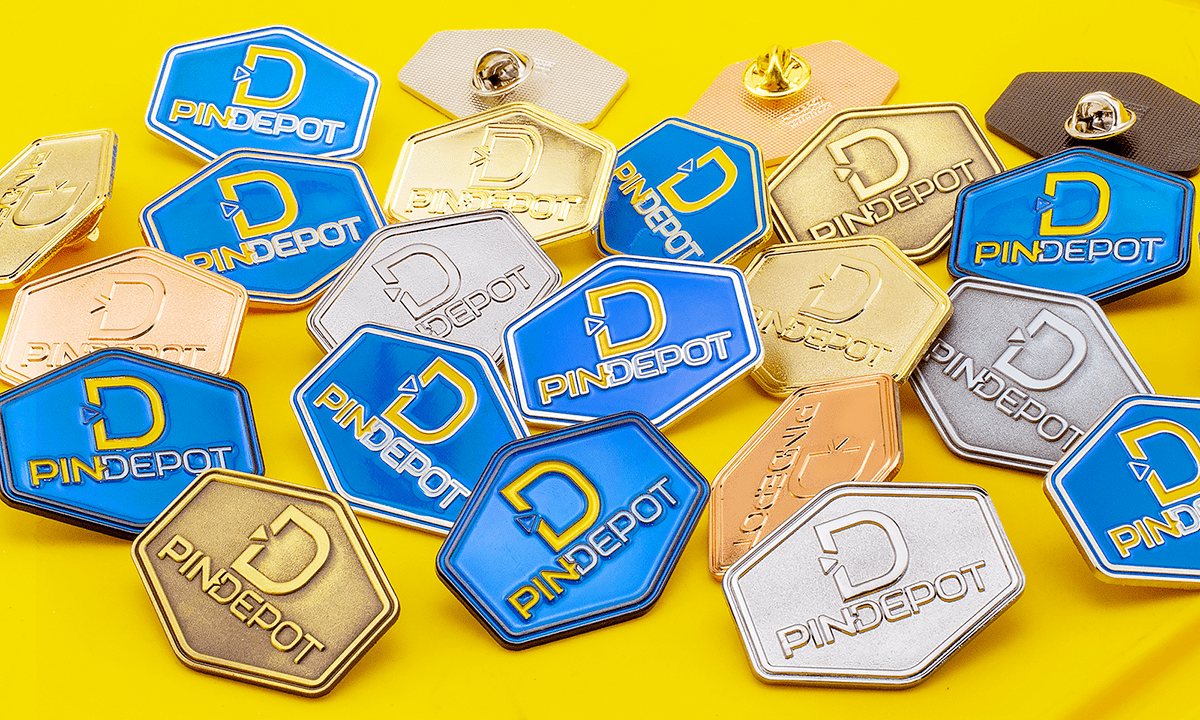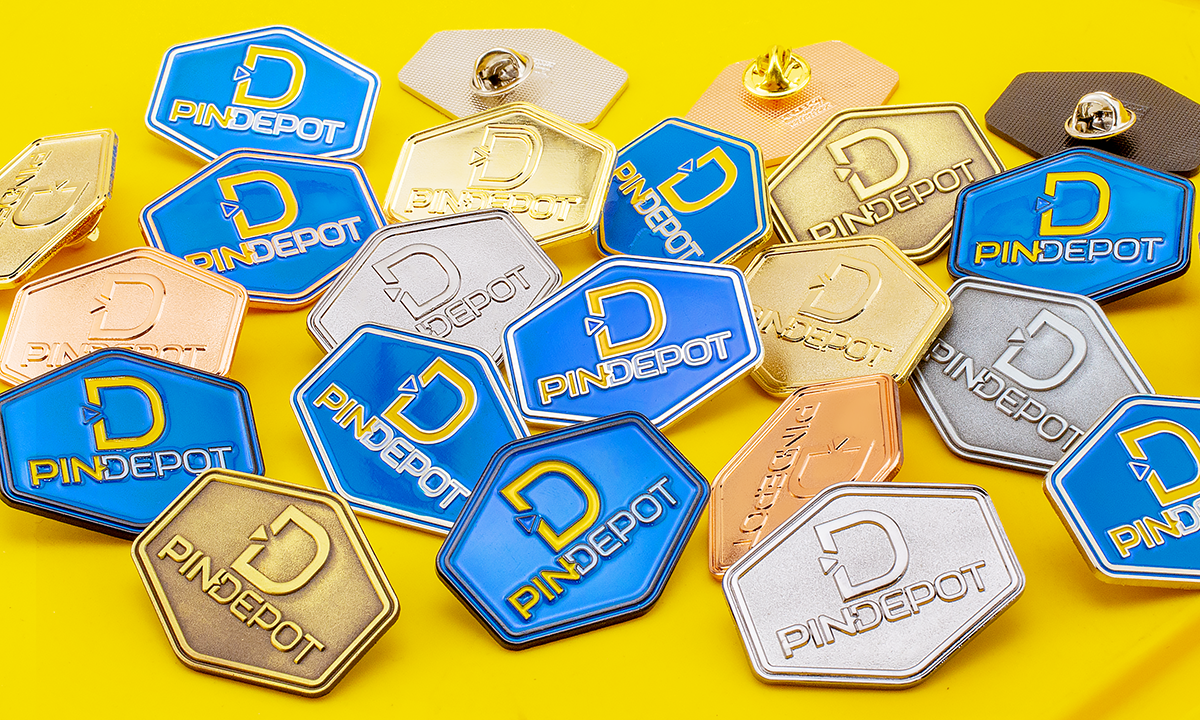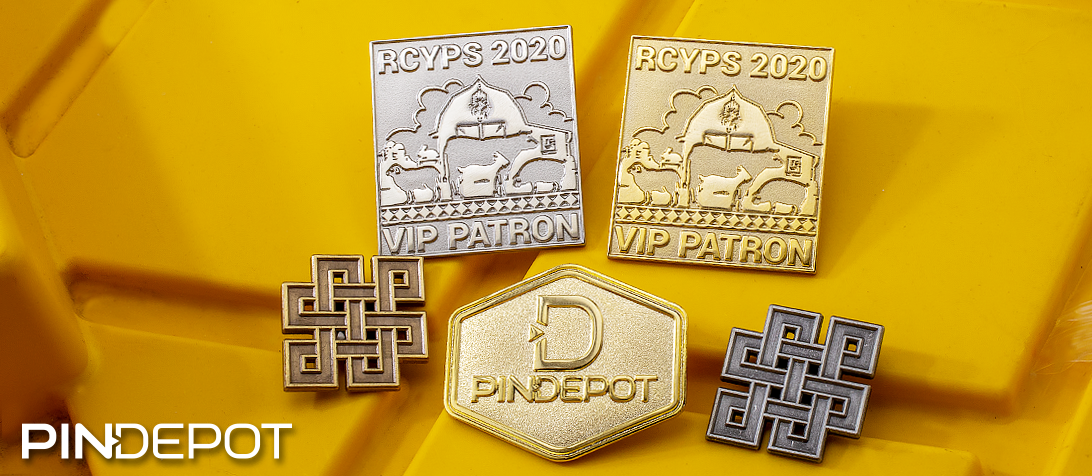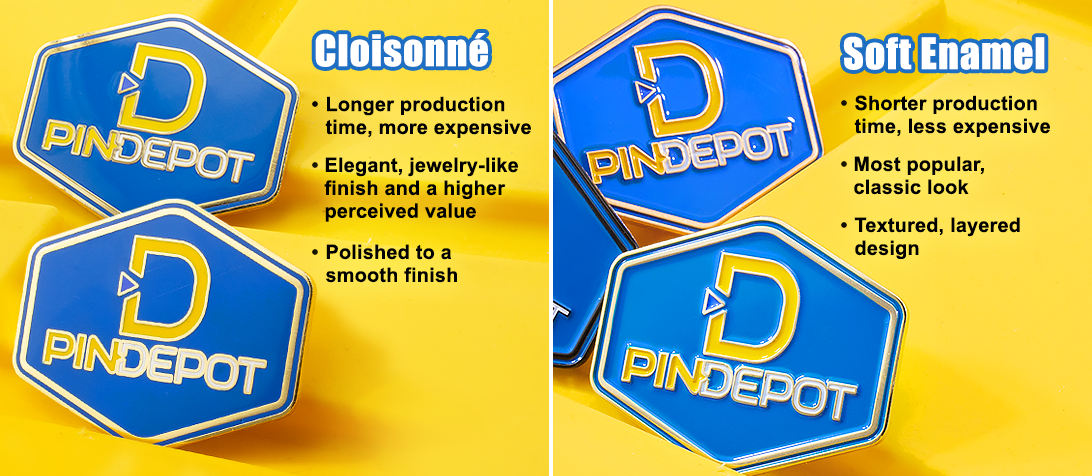
Our Most Popular Pin Types and Their Differences
Are you looking to make a custom lapel pin but do not know which type of pin is right for you?

Die Struck-Soft Enamel-Hard Enamel
Are you looking to make a custom lapel pin but do not know which type of pin is right for you? We get asked almost every day by our customers which pin style is best for their project and design. Not everyone is a lapel pin expert but that is why we are here. We educate our clients throughout the design process and make suggestions so that they feel comfortable placing their order and know exactly what they are getting. Let us help you decide what is best for your custom pin design.
Our most popular pin types are die struck, soft enamel and cloisonne (hard enamel) pins. First, we will discuss Die Struck pins and learn about what they are and when you might want to choose this type.
DIE STRUCK PINS
A Die Struck lapel pin starts the same way a Soft Enamel pin would. The mold is stamped out in metal and then plated in your choice of metal plating finish. Instead of enamel color being added the pin is left to shimmer and shine with the chosen metal plating.
Custom die struck pins can be just as stunning as any pin with colors like a Soft Enamel or Cloisonne style pin. These pins are popular with our customers because they really showcase the design and offer a classic metal appearance. Choosing a high polished plating will give you a shiny and reflective finish making your design stand out, like a shiny new penny! We can add visual contrast from the raised polished metal by adding texture to the recessed areas. Selecting an antique plating, on the other hand, can give your design even more contrast and appeal. During the production process, these pins will receive an antique wash that will slightly dull the plating’s shine, giving it an aged and antique look. The recessed areas and corners of the pin will retain more of the antique finish making them darker. This is what gives the design the visual contrast that makes this plating such a wonderful choice when deciding to use a Die Struck pin.

You have learned about Die Struck pins so now it is time to teach you about Soft Enamel and Cloisonné style pins. To put it simply, a Cloisonné style pin is polished to a flat and smooth finish, whereas Soft Enamel pins have raised and recessed areas. If you were to run your finger over the surface of a Soft Enamel pin you would feel the raised metal and the recessed areas holding the enamel color while a Cloisonné pin is completely smooth to the touch.
Let’s dive in and learn a little more about how these pins are made and when you might choose one type over the other.
View More Die Struck Pins in Gallery
SOFT ENAMEL PINS

To start making your soft enamel pins we must first create a custom mold of your design by stamping it into metal. This process is called “die striking”. The individual impressions will be punched out to be separated from the larger piece of base metal. The punched-out pins will then be plated, polished and filled with enamel “paint” in the recessed areas but not all the way up the edges. This gives soft enamel pins their tactile and textured feel. These colored pins will then require time to cure so the colors can harden into a more durable finish. A thin layer of epoxy resin can be added to protect the surface of the pin. Finer details and intricate designs can be better achieved using a Soft Enamel pin type.
View Soft Enamel Pins in Gallery
CLOISONNE PINS

The process for making hard enamel pins is similar to making our soft enamel pins but with some added steps. This time, the punched-out pins will first be filled with powdered resin until they reach past the raised metal outlines making up the design. Each color is added individually onto the pin and placed into a kiln to be baked at a high temperature. This will harden and cure the enamel to create a very durable finish. After time in the kiln, the pins will be hand polished until the paint is flush with the metal giving these pins their lustrous and smooth jewelry-like finish as well as the classic thin lines. Each color is applied in this manner until all colors are added to create the design. Once all colors have been applied the final step is to plate the pin in your choice of metal plating finish.
Traditionally, a cloisonné style pin would be filled with colored glass but we provide a full selection of Pantone colors to allow endless design possibilities. The process is more labor-intensive and requires more time under quality control to ensure that each small color filled area is smooth to the touch and free of defects. Polishing these pins smooth can also make the metal lines less detailed and thinner but colors will be more vibrant.
View more Cloisonné Pins in Gallery

WHICH PIN TYPE TO CHOOSE? Just tell me!
Let us help you quickly understand the advantages and the distinctive features of each pin type.
Cloisonné
- Longer production time, more expensive
- Elegant, jewelry-like finish and a higher perceived value
- Polished to a smooth finish
Soft Enamel
- Shorter production time, less expensive
- Most popular, classic look
- Textured, layered design
STILL NEED HELP?
Pin Depot is here to make your life easier! Let us help you decide what pin type would look best with your design. We have over 20 years of experience and will employ our knowledge to ensure that your pin is exactly what you need. We offer free artwork and unlimited revisions, making it easy to show your design in different styles so you can also choose what you might like best. Contact us today to get started on your order of custom lapel pins.


